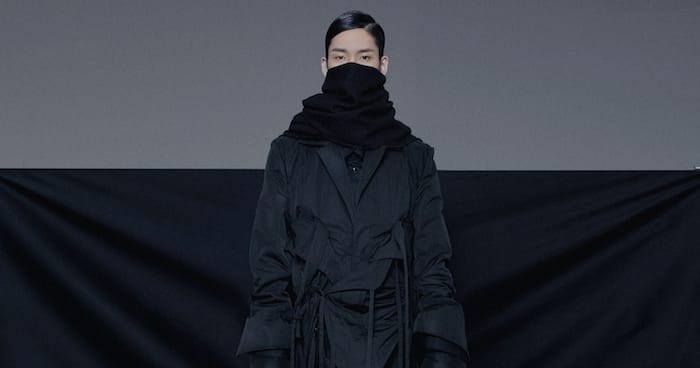
Kit Woo knows a thing or two about draping fabric. His designs break apart conventional approaches to silhouettes and shape, and challenges the notion of fit on the human form. Art comes to life as the enigmatic designer plays with proportions creating luxuriously sartorial pieces each fluid, bold, and incredibly dimensional. BAZAAR catches up with the charming designer from his studio as he prepares for his upcoming showcase at Kuala Lumpur Fashion Week on 18 August.

You have perfected the art of quiet, subtle luxury. There seems to be the preconceived notion that Malaysian fashion is loud, with bold colours and patterns, but you prove that there is craftsmanship and beauty in restraint. Can you discuss that a bit with us?
Kit Woo (KW): Not quite perfected yet (laughs). I think trying to achieve perfection is not necessary as I believe imperfections is what the brand is all about, about ‘beauty in restraint’. I love a style that is outstanding but also mysterious. My canvas will always be black because I can focus on the cut, drape, and shape – these are the things that people do not notice in an instant – as opposed to bold colours. There’s so much to talk about rather than “Hey, a bold electric blue!” as compared to “I spent six months working on this particular cut and pattern”.
Your work inherently empowers the wearer – a kind of bold, contemporary, genderless power. What is the message you aim to send through your clothes?
KW: That there’s no limit, only through your interpretation and comfort.
Your pieces have an international sensibility about them. How does Malaysian culture factor into the Kit Woo aesthetic?
KW: I think coming back from New York City, I am trained to cater to people from around the world because there are a lot of international buyers there. A style needs to speak an international language. As for my Malaysian roots? I just study what people wear, it is part of my design process. For example, I paired my KLFW 2019 line-up with footwear called “Adidas Kampung”. It is 100% rubber, made-in-Malaysia, and is the most Malaysian thing I’ve incorporated into my collection. Not a lot of people know about the show or that I used it in my show.
Can you take us through the evolution of Kit Woo? Would you say there has been a massive change in design influences, especially post-pandemic?
KW: From the beginning, it was about making an impact. Then, staying relevant (especially on social media), I just feel like we are made to feel that we need to design for Instagram, which is terrible because you will start comparing yourself. Kit Woo has its core DNA and we have always experimented with new categories, silhouettes, colours, etc. Every season is a chance to elevate our design processes. As for post-pandemic, not so much because pandemics come and go, creativity is infinite.
As you will be presenting a collection at this year’s KL Fashion Week, what are you most excited about your next collection?
KW: Going back to your first question, I will be showcasing a suit that took me six months to create. It is definitely not couture, but it did take me some time to achieve that particular drape I wanted. The most exciting part is preparing the line-up, it changes every day! But it is a process that I enjoy.
Where do you see the future of Malaysian fashion heading?
KW: People are a bit more receptive to experimental fashion, gender-bending, ill-fitting clothes. So it is heading in a good direction I guess?
With numerous influencers creating their own start-up brands or “labels” do you think this detracts from the local fashion market?
KW: Not really, but I’d say this – if you call yourself a ‘fashion designer’ but have not held a pair of fabric scissors before, it just feels so soul-less to me.
What needs to evolve in terms of creating a more dynamic fashion industry for Malaysia?
KW: The shopping experience. It’s dull here, women’s on the first floor, men’s on the second shared space with the kids-wear. Predictable. Everything is too organised like they are telling you what you need to buy. I want to get lost in a departmental store with sculptures or odd displays. Like Dover Street Market, it’s an experience and not just another transaction.
How does Kit Woo aim to change the local Malaysian fashion landscape?
KW: I’ll just keep doing what I’m doing for as long as I can (laughs). But I wouldn’t want to change per se, but hope to be part of the change that is inevitably coming.









